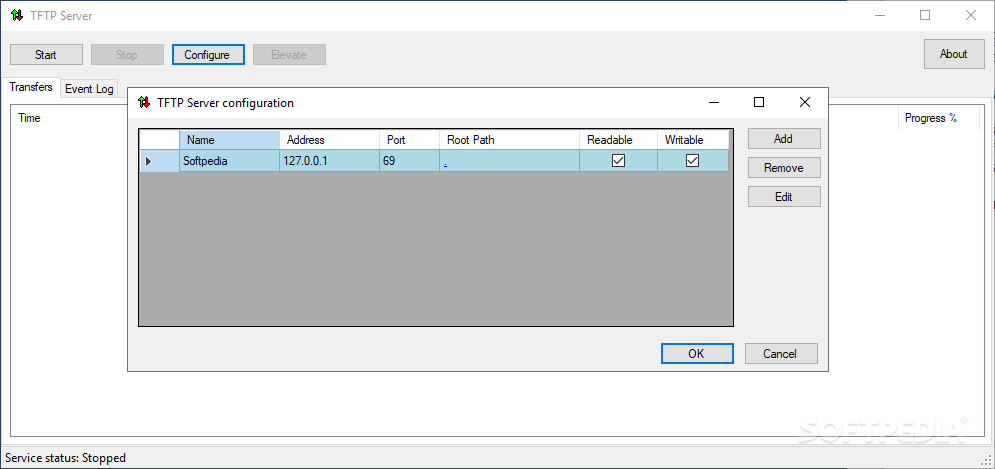
On normal termination (SIGTERM or SIGINT) the pid file is automatically removed. When run in standalone mode, write the process ID of the listening server into pidfile. Perform no additional permissions checks above the normal system-provided access controls for the user specified via the -user option. The default is zero (anyone can read or write) if the -permissive option is not specified, or inherited from the invoking process if -permissive is specified.

Sets the umask for newly created files to the specified value. The user ID, group ID, and (if possible on the platform) the supplementary group IDs will be set to the ones specified in the system permission database for this username. Specify the username which tftpd will run as the default is "nobody". The use of this option is recommended for security as well as compatibility with some boot ROMs which cannot be easily made to include a directory name in its request. When -secure is specified, exactly one directory should be specified on the command line. This means the remote host does not need to pass along the directory as part of the transfer, and may add security. secure, -sĬhange root directory on startup. Files are created with default permissions allowing anyone to read or write them, unless the -permissive or -umask options are specified. By default, tftpd will only allow upload of files that already exist. create, -cĪllow new files to be created. Please note: Numeric IPv6 adresses must be enclosed in square brackets to avoid ambiguity with the optional port information. The default is to listen to the tftp port specified in /etc/services on all local addresses. Specify a specific address and port to listen to when called with the -listen or -foreground option. Similar to -listen but do not detach from the foreground process.

In listen mode, the -timeout option is ignored, and the -address option can be used to specify a specific local address or port to listen to. Run the server in standalone (listen) mode, rather than run from inetd.

ipv6, -6Ĭonnect with IPv6 only, if compiled in. Options -ipv4, -4Ĭonnect with IPv4 only, even if IPv6 support was compiled in.

The server is normally started by inetd, but can also run standalone. The TFTP protocol is extensively used to support remote booting of diskless devices. Tftpd is a server for the Trivial File Transfer Protocol. Trivial File Transfer Protocol server Synopsis


 0 kommentar(er)
0 kommentar(er)
